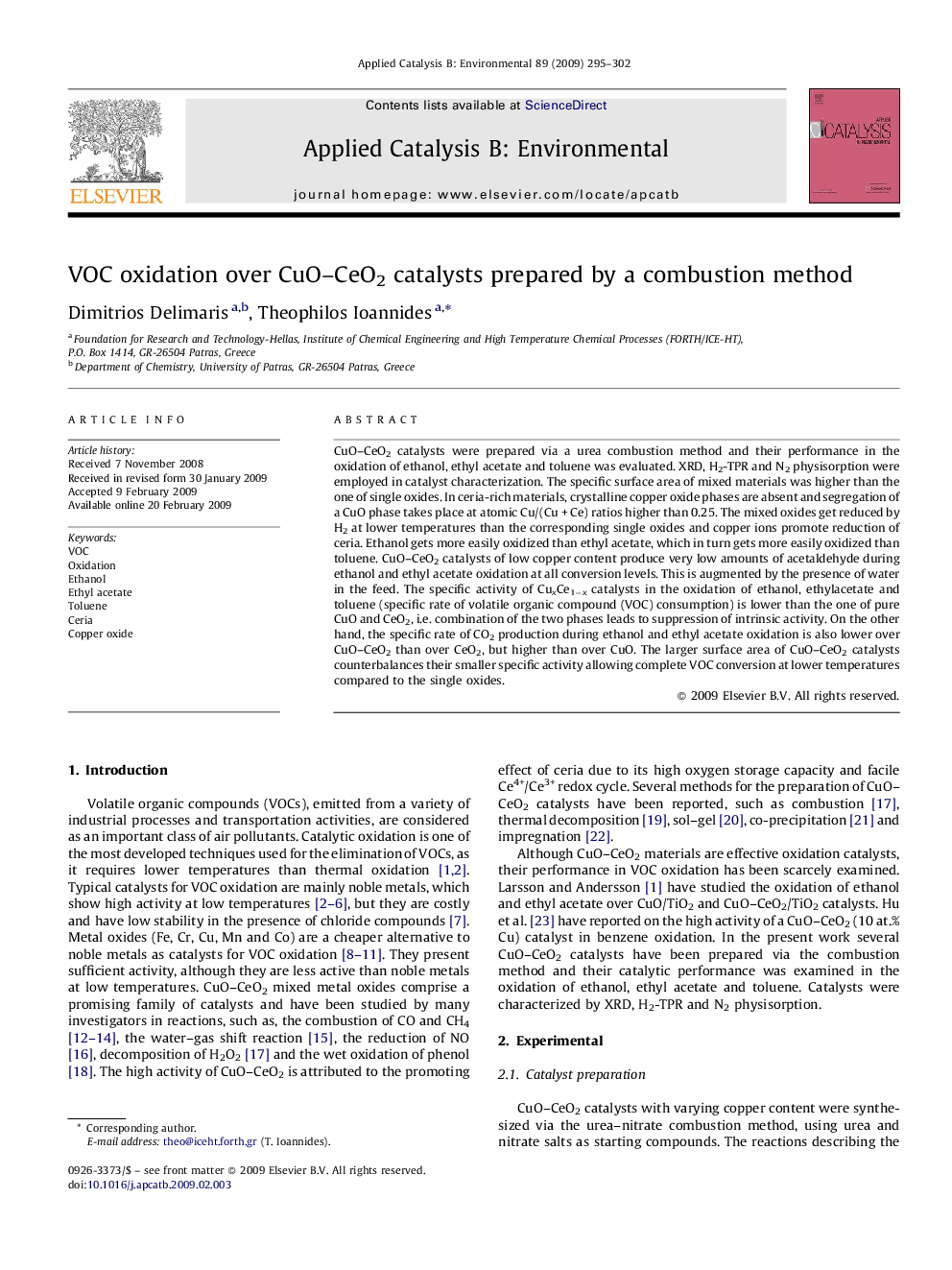| Article ID | Journal | Published Year | Pages | File Type |
|---|---|---|---|---|
| 47863 | Applied Catalysis B: Environmental | 2009 | 8 Pages |
CuO–CeO2 catalysts were prepared via a urea combustion method and their performance in the oxidation of ethanol, ethyl acetate and toluene was evaluated. XRD, H2-TPR and N2 physisorption were employed in catalyst characterization. The specific surface area of mixed materials was higher than the one of single oxides. In ceria-rich materials, crystalline copper oxide phases are absent and segregation of a CuO phase takes place at atomic Cu/(Cu + Ce) ratios higher than 0.25. The mixed oxides get reduced by H2 at lower temperatures than the corresponding single oxides and copper ions promote reduction of ceria. Ethanol gets more easily oxidized than ethyl acetate, which in turn gets more easily oxidized than toluene. CuO–CeO2 catalysts of low copper content produce very low amounts of acetaldehyde during ethanol and ethyl acetate oxidation at all conversion levels. This is augmented by the presence of water in the feed. The specific activity of CuxCe1−x catalysts in the oxidation of ethanol, ethylacetate and toluene (specific rate of volatile organic compound (VOC) consumption) is lower than the one of pure CuO and CeO2, i.e. combination of the two phases leads to suppression of intrinsic activity. On the other hand, the specific rate of CO2 production during ethanol and ethyl acetate oxidation is also lower over CuO–CeO2 than over CeO2, but higher than over CuO. The larger surface area of CuO–CeO2 catalysts counterbalances their smaller specific activity allowing complete VOC conversion at lower temperatures compared to the single oxides.
